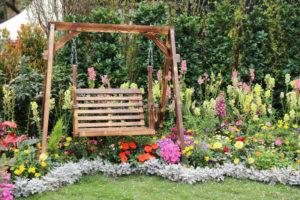Transplanting Perennials in the Fall
Have overgrown perennials on one side of your garden and scarce to none on the other? Looking to rearrange the layout of a few beds? Whatever the reasons you may have for wanting to spruce up your garden, fall is the perfect time of year to make these changes!
Perennials to Divide
Some of the many perennials that benefit from being divided include yarrow, bleeding heart, gayfeather, creeping jenny, sedum, dead nettle, foam flowers, coral bells, hellebores, ajuga, astilbe, phlox, iris, cannas, bergenia, anemonees, daylilies, hostas, stokesia, lamb’s ear, huechera, ornamental grasses and ferns. Although most perennials respond well and even need to be divided, some perennials should be left undisturbed. Avoid dividing peonies, lavender, goat’s beard, swamp milkweed, baptisia australis, candytuft, Russian sage, garden sage, rosemary, and euphorbia.
Reasons to Transplant Perennials
One of the easiest and healthiest changes you can make this fall for your plants, specifically perennials, is transplanting. By digging up, dividing, and transplanting perennials after summer, you are setting up your plants for a healthier spring the following year. Perennials can have a mind of their own and thrive in some spots and never really start in others. Transplanting your overgrown perennials helps keep them manageable and gives you fillers for the empty spaces in your beds. Older perennials often experience issues over time such as crowded roots which prevent the plant from properly absorbing nutrients and moisture from the soil. Dividing your perennials every few years fixes this by keeping their root structures healthy which increases blooms, and the best bonus for gardeners is all the additional, free plants.
Spring Verses Fall Blooming Perennials
When transplanting, do not dig up and divide fall blooming perennials during the fall or while they are in flower. One rule of thumb is to transplant fall-blooming perennials in spring and spring-flowering perennials in fall. Every time you dig up plants, some roots will be lost. Be mindful to dig when the temperatures have become cooler to not fry the frayed roots when they are transplanted.
Overall, transplanting is quick and simple. Follow these 5 steps below for an easy experience!
Five Simple Steps for Successfully Transplanting Perennials
-
Selection
- Select healthy, mature plants for best results. Choose larger, older perennials with good growth patterns to ensure a healthy transplant.
-
Timing
- Dig when the soil is dry and the temperatures have cooled from summer. Saturated, overly soggy soil can compact the roots with mud which makes it difficult for plants to get the oxygen and nutrients needed for survival.
-
The Dig
- Grab your favorite, preferably sharpest shovel and dig outside the plant’s root zone- typically equal to the outermost edge of the foliage.
- Try to keep as much of the root mass intact as possible. The more roots you save when digging the higher chances your transplant has of surviving.
-
Dividing
- It may feel counter-intuitive, but when dividing, split from the bottom up aka roots to top.
- After digging your perennial out, lay its foliage down with the roots exposed upwards. With your sharp shovel, or knife, cut through the roots to divide and gently pull apart.
- This method allows you to divide in like-size sections and your new plants will grow and mature to be more similar in size.
- It may feel counter-intuitive, but when dividing, split from the bottom up aka roots to top.
-
Transplant Transplant Transplant
- Do not let your newly sectioned plants sit around and dry out! The quicker you plant the divided perennials, the higher likelihood the roots will establish and survive.
- Grab your shovel again and dig a few new holes, maybe picking more bare areas in your beds, and add your plant with the foliage above soil and roots fully covered.
- Add compost! Compost is full of nutrients and will help retain moisture around the vulnerable roots. A 50/50 soil to compost mix is a great combination to fill in around your transplants.
- Water! Water more in the beginning and less frequently as the weather cools.
Don’t worry if your new transplant drops some foliage or even dies back as fall turns into winter. This is the natural process of dormancy. When spring rolls around, your perennials will come back in full force as their roots were able to develop and spread during the fall before winter. If you end up having too many newly divided plants, consider sharing the fun with your friends and family! For further information on dividing your perennials, check out this article or this video!
